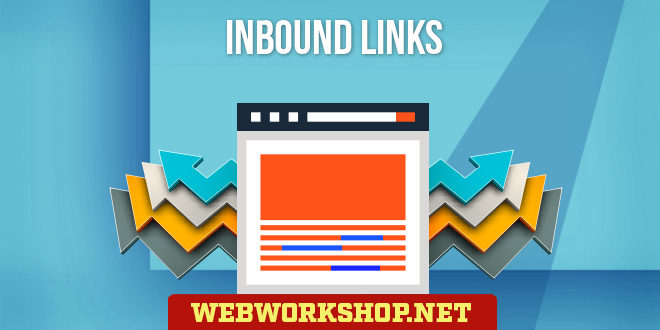Link text (the text that is clicked on when clicking on a link) is singly the most important factor when Google determines the rankings for any given searchterm. This article isn’t about that aspect of inbound links, although it is briefly touched on. This article discusses inbound links for their link popularity/PageRank value, and provides ideas on how to acquire them.
Why do we need inbound links?
Even before Google came on the scene, link popularity (linkpop) was being used by one or two search engines as part of their algorithm when determining the rankings for any given searchterm. Then when Google arrived with their link-based PageRank, link popularity took off and became an absolute essential ingredient in achieving top rankings.
The idea behind linkpop is that the more pages that link to a page, the more important the page is and it, therefore, deserves a higher ranking than it would otherwise have.
Some engines simply counted the number of links coming into a page (inbound links), but Google took the idea a step further. Each inbound link comes comes from a page which itself has inbound links. The more inbound links on the linking page, the more important that page is and, therefore, the more important the link to our page is. So Google gives more weight to inbound links from important pages that it does to inbound links from lesser pages. They call the idea “PageRank”, and you can learn all about in this PageRank article.
Google is the world’s number one search engine, and currently provides the results for around 80% of all the searches done in the world. Because of that, it is vitally important for any website that relies on search engine traffic to do well in Google. Doing well in Google means making the site ‘important’ in Google’s eyes and, to do that, the site must have good inbound links – as many of them as possible, and preferably from important pages (pages with medium to high PageRank values).
How do we get inbound links?
There are a number of ways. Some of them are:-
Directories
Directories usually provide one-way links to websites, although some require a reciprocal link. Personally, I have no time for those that require reciprocal links, because they aren’t really trying to be useful directories. Submitting to directories is time-consuming and boring, but there are a number of cheap directory submitting services that do a very good job.
Forums
Join forums and place links to your site(s) in your signature line. Use your main searchterms as the link text – I’ll come to why that is necessary later in this article. But before spending time writing lots of posts with your signature line in each post, make sure that the forum is spiderable by checking the robots.txt file, and make sure that non-members don’t have session IDs in the URLs. Also make sure that links in signature lines are not hidden from spiders (view the source code to make sure that signature links are in plain HTML format and not in Javascript).
Link exchange centers
Find a join free link exchange center like LinkPartners.com. There you can find a categorized directory of websites that also want to exchange links. Be careful not to sign up with FFA (Free For All) sites because they are mostly email address gatherers and you can expect a sudden increase in email spam soon after you sign up. Also, only sign up with centers where you can approach other sites personally, and where they can approach you personally.
Do not join any link farms!!! Link farms, such as LinksToYou.com, sound excellent for building up linkpop and PageRank, but search engines (Google in particular) disapprove of them as blatant attempts to manipulate the rankings and they will penalize sites that use them. Once a site has been penalized, it is very difficult to get the penalty lifted, so avoid all link farms.
Email requests
(a) Search on Google for your main searchterms and find the websites that are competing with you. Then find which sites link to them by searching “link:www.cometitor-domain.com”. Email them and ask for a link exchange.
(b) Search on Google for websites that are related to your site’s topic, but not direct competitors, and ask them for a link exchange.
Buy them
There are websites that want to sell links. They are usually medium to high PageRank sites, and often the link will be placed on multiple pages, or all pages within the site. It’s possible to approach individual sites where you would like your links to appear, but it is much quicker, easier and more reliable to use a middle-man service (or broker).
Link brokers offer links for sale on behalf of other websites (you could use the service to sell links on your site!). With these services, it is usual to be able to choose the type (topic) of the website(s) where you want to place your links. I am not aware of any disreputable practises with link brokering.
Finally, there are even links for sale by public auction, such as the one at LinkAdage Auctions.
What type of links?
Inbound links serve three purposes:-
(1) they add linkpop and PageRank to the site, (2) they send traffic to the site, and (3) if the link text (the text that is clicked on) is good, then the page’s rankings can be improved.
(1) for linkpop, either text or graphic links are fine, (2) for traffic, text links are known to be more effective than graphic links, and (3) to positively affect a page’s rankings, text links are the best. So get text links and not graphic links.
(1) for linkpop, get links from anywhere, (2) for traffic, get links from related sites, and (3) to improve the page’s rankings, get links from anywhere – the higher the PageRank of the linking page, the better and, whenever possible, make sure that the link text is one of your main searchterms (see Search Engine Optimization – the basics).
Summary
Inbound links are important for websites that want to move up the rankings. Inbound links, with the right link text, are essential for achieving top rankings.
Most websites are not natural link magnets, and link acquisition can be time-consuming and frustrating. Many websites that are approached by email will say no, but some will say yes. For top rankings, it is essential to take the time and get many inbound links.
Update
Google’s “Big Daddy” update, which was rolled out during the first part of 2006, was largely concerned with their crawling and indexing functions. The update contained a new concept for them – making a mathematical calculation to determine how many of a site’s pages to have in the index. The mathematical formula is concerned with the nature and trustability of links coming into a site, the nature of links going out of it, and the quantities of those.
The new crawl/index system doesn’t specifically penalise sites for having too many links of the ‘wrong kind’, but it doesn’t give them credit for crawl/index purposes, and many sites suffered by having large numbers of pages removed from the index.
This is important, because it means that exchanging links willy-nilly can actually cause some or many of a site’s pages to be removed from the index, due to the lowering of the site’s IBLs/OBLs score. So it is better to exchange on-topic links than to exchange off-topic ones. The days of a link is a link is a link are over. The helpfulness of an over-abundance of reciprocal links are gone, and it can actually cause some of a site’s pages to be dropped from the index.


